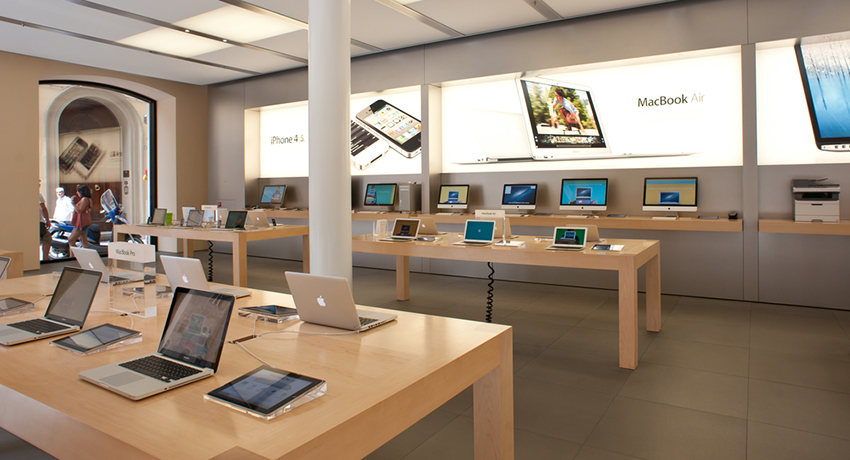Your iPad (and iPhone) is Covered in Bacteria

Apple store image via pio3 / Shutterstock.com
We all know that iPads (or your favorite tablet of choice) are being used for more than personal reasons. Community tablets and other touchscreen devices have become commonplace, especially in doctor’s offices, where front desk personnel use them to check in patients. And most of us always have our iPhones or smartphones in our hands at all times, even at the gym, in a meeting, or in bed (you know who you are). But unless you’re regularly cleaning it (and you know you’re not), exactly how dirty do these things get?
Antibiotic resistant bacteria is a really big deal now when it comes to national health. These infectious microbes are powerful, microscopic bugs. In fact, according to a new report put out last month by the CDC, at least 2 million people a year become infected with bacteria that are resistant to antibiotics and at least 23,000 people die as a direct result of these infections. That’s why Betsy Hirsch, an assistant professor in the Department of Pharmacy Practice at Northeastern University is researching how different combinations of drugs might do a better job of killing these bacteria than a single drug alone. In a report she says:
Antibiotic-resistant bacteria have evolved or acquired mechanisms that make them resistant to, generally speaking, multiple classes of antibiotics. The overuse or inappropriate use of antibiotics in both humans’ health and agriculture can lead to the emergence and spread of antibiotic-resistant bacteria. The CDC report describes that a disturbing number—up to 50 percent—of all prescribed antibiotics are unnecessary or inappropriately prescribed.
In a collaborative project, Hirsch and her team swabbed the sleek surfaces of 30 pharmacy practice faculty members’ iPads looking for three types of bacteria: methicillin-resistant Staphylococcus aureus (aka MRSA), vancomycin-resistant Enterococcus, and Pseudomonas aeruginosa.
According to the report, the team was expecting to see differences in the bacterial colonization on the iPads that regularly visit the clinic (iPads that come and go off campus) than on those that stick around the university more often. But that was not the case.
It turns out both groups had significant levels of bacteria living on them, providing fertile ground for transferring infection from one person to another. For those iPads that do see the hospital, the results show yet another surface for clinicians to be wary of when interacting with patients, especially immunocompromised patients, like people with cancer or HIV, and even pregnant women.
The bottom line: Use common sense when it comes to your devices. Clean them regularly using rubbing alcohol, and wash your hands. Especially if you’re touching community touchscreens. You never know where someone else’s hands have been. Rumor has it that Apple is working on building antibacterial screens so there will never be a need to clean it. But that’s still gross.


